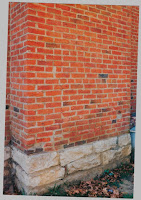Mr. J. B. McNeely, was the press scribe back in the year of 1912. As he visited all the little towns selling advertisements for the paper, he would write about them and then share the news with the readers of the Press. Through these entertaining articles we can learn a lot of history about our towns of long ago.
August 25, 1912
Shady Grove is situated in the eastern part of Crittenden County near the Webster County line. It is a village of about three hundred inhabitants and the merchants are enjoying a good trade.
There are three dry good stores, one drug store, grist mill, post office and cold drink stand. Here are the names of the business firms as we take them from our note book.
- Drs. Jeff McConnell and G. C. Collins are the physicians, and there are no better to be found in this end of the State. They carry a stock of drugs in connection with their professional trade.
- Owen Beard wants to sell you cold drinks. Give him a call.
- Messrs J. H. Lamb and W. F. McDowell are the blacksmiths and they can make anything from a horseshoe nail to a steam thresher.
- Mrs. B. C. Birchfield wants to supply you in the latest styles of ladies hats. Call and see her.
- Fred Lemon wants to trade with you, he handles a variety of goods.
- W. D. Tudor is the postmaster and no better can be found than Willie Tudor. He is polite and attentive to everyone that has business with him.
- T. C. Land is the barber; he is careful in his work and gives satisfaction.
- Richard McDowell is the carpenter and is kept busy.
- Tudor and Horning are dealers in general merchandise and controls a large trade, in fact, all that Shady Grove need to do is advertise her business for she is situated so as to draw a large trade.
- Sheck C. Towery and wife, Josie, keep one of the best hotels in this section of the state.
- Opportunity for worship is well provided for. There are two churches, Baptist and Methodist.
- There is also a splendid school building.





